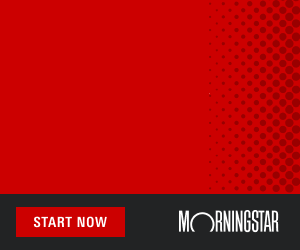Economists at the National Australia Bank are not fully convinced by the rebound in commodity prices over the past fortnight since China announced a series of seemingly coordinated stimulus measures aimed at helping its struggling economy.
In their quarterly update on the outlook for commodities, they stated that "recent commodity price increases are closer to irrational exuberance than a signal of shifting market conditions."
The NAB's economics team noted that the measures announced by China so far do not appear to be sufficient, despite strong price increases for iron ore, premium and soft-quality coking coal, and thermal coal over the past two weeks—iron ore having risen the most.
Copper prices have also increased, but the NAB analysis questions whether the Chinese proposals provide enough justification for continued price optimism.
"We argue that the measures implemented so far, along with the rumored fiscal package, are somewhat underwhelming when compared with China’s economic headwinds,” the NAB report stated on Monday.
“The measures announced so far are unlikely to drive a strong rebound in Chinese economic activity and, consequently, commodity consumption. This largely reflects the extremely weak loan demand from both households and businesses, which rate cuts alone are unlikely to reverse.”
As a result, the bank foresees little improvement in returns for Australia over the next year or so.
The NAB reported that its Non-rural Commodity Price Index fell by approximately 3.6% in the three months to September, compared to the June quarter, "with this downturn largely driven by metallurgical coal and iron ore. We expect a similar decline in Q4.”
The bank remains skeptical that still-unannounced fiscal measures in China will be adequate.
"As a result, we expect our commodity price index to fall by 11.0% in 2024 and a further 13.6% in 2025, with iron ore and coal as the main contributors to this trend," the bank forecasted.
Chinese exports are performing well—having done so since before the support packages began rolling out on September 24—but this is as much due to price cutting as it is to Chinese manufacturers pushing more unwanted products into global markets, including EVs, conventional cars and trucks, and metal products, especially steel, which is currently running at an annual rate of over 90 million tonnes.
"The fundamental issue facing Chinese authorities is prolonged weakness in domestic demand, while most policy measures since the start of the COVID-19 pandemic have been directed toward the supply side of the economy."
The NAB economic team stated that this has exacerbated existing imbalances, contributing to the surge in China’s export volumes. Consequently, an increasing number of countries have announced tariffs on Chinese exports—most recently, Canada’s 100% tariff on electric vehicles and a 25% tariff on steel and aluminum.
Last week, the EU imposed significant tariffs on imports of Chinese EVs, even though Germany and Spain opposed these measures.
Regarding the prices of commodities crucial to Australia, the NAB reported that its iron ore price forecasts remain unchanged: "We expect iron ore to average US$108 per tonne in 2024 and to ease further in 2025 to US$87 per tonne,” the NAB noted in its quarterly outlook.
Iron ore prices were around US$110 per tonne on Monday on the SGX platform in Singapore—up 20% in the two weeks since the stimulus plans were announced.
Premium hard coking coal prices jumped past US$230 per tonne after September 24, up from around US$186 per tonne just before that date, but the NAB does not foresee that strength continuing: "Hard coking coal is forecast to average US$239 per tonne in 2024 and drop below US$190 per tonne in 2025.”
Thermal coal prices have been driven by strong demand from China, especially due to heatwaves, floods, and dry spells along the east coast, which have lifted demand for thermal coal to record levels.
“Thermal coal prices remain elevated compared to mid-year levels. We forecast thermal coal to average US$135 per tonne in 2024 and US$105 per tonne in 2025,” the NAB estimated in its report.
In contrast, Citi has taken a bullish stance, projecting that China’s stimulus blitz will lift iron ore prices to US$120 per tonne and copper to US$10,500. This is not far from the current mineral prices—iron ore was around US$110 per tonne on Tuesday in Singapore but slid 5% to just over US$105 per tonne when the anticipated stimulus spending did not materialize.
LME copper was trading at around US$9,934 per tonne in London during the Asian session and fell 2% on Tuesday in Europe and the US.
Citi has adopted a temporarily bullish outlook to capitalize on Beijing’s widely anticipated policy pivot, but it warned that the impact would fade as US election and recession risks come to the forefront and when higher prices begin to affect demand.
If there is no quick follow-up, Citi's bullishness may fade rapidly.




